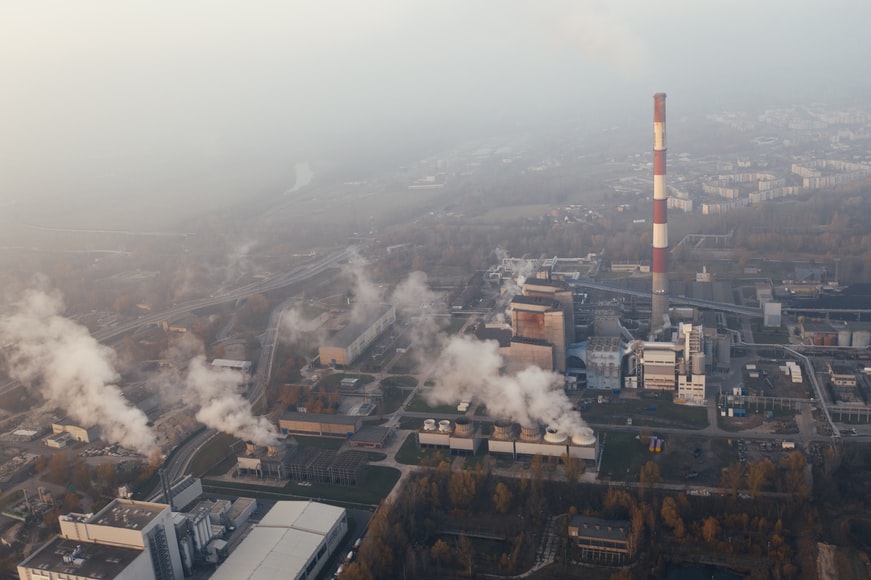Air Quality 101: Particulate Matter. It’s been one of the most mentioned terms over the last two years, and as awareness about indoor air pollution is more and more present in everyday conversations, we wanted to go more in-depth, and explain what is about.

According to the EPA (the United States Environmental Protection Agency), “Particulate Matter, (PM, also called particle pollution), is a “term for a mixture of solid particles and liquid droplets found in the air. Some particles, such as dust, dirt, soot, or smoke, are large or dark enough to be seen with the naked eye. Others are so small they can only be detected using an electron microscope”.
As Particulate Matter makes reference to different types of non-visible pollutants, we’ll review what are the main types and where do they come from.
What types of Particulate Matter can you find in the air you breathe?
Particle pollution includes the following. We’ve classified them by size:
- PM10
PM10 are “inhalable particles, with diameters that are generally 10 micrometres and smaller”.
- PM2.5
PM2.5 are “fine inhalable particles, with diameters that are generally 2.5 micrometres and smaller.
How small are 2.5 micrometres? Think about a single hair from your head. The average human hair is about 70 micrometres in diameter – making it 30 times larger than the largest fine particle”.
- PM0.1
PM0.1 makes reference to “ultrafine particles smaller than 0.1 µm Fine particles are largely formed from gases. Ultrafine particles are formed by nucleation, which is the initial stage in which the gas turns into a particle”.

Main sources of particulate matter
“These particles come in many sizes and shapes and can be made up of hundreds of different chemicals.
Some are emitted directly from a source, such as construction sites, unpaved roads, fields, smokestacks or fires.
Most particles form in the atmosphere as a result of complex reactions of chemicals such as sulfur dioxide and nitrogen oxides, which are pollutants emitted from power plants, industries and automobiles”, according to EPA.
Main PM10 pollutants:
- Airborne viral particles
- Smoke and dust
- Mould and bacteria
Main PM2.5 pollutants:
- Combustion activities such as:
- Wildfires
- Vehicle gases
- Power plant emissions
Main PM0.1 pollutants:
- Gas combustion
- Chimney smoke
- Wildfires
- Welding
Compared to fine particles (PM2.5), PM0.1 cause more pulmonary inflammation and are retained longer in the lung. Their toxicity is increased with smaller size, larger surface area, adsorbed surface material, and the physical characteristics of the particles.

How do these particles affect our health?
These pollution particles affect our respiratory and cardiovascular systems. Exposure to particulate matter can cause serious health damage, chronic disease and even death.
“Particulate matter PM10 and PM2.5 contain microscopic solids or liquid droplets that are so small that they can be inhaled and cause serious health problems. Some particles less than 10 micrometres in diameter can get deep into your lungs and some may even get into your bloodstream.
PM0.1 causes systemic inflammation, endothelial dysfunction, and coagulation changes that predispose individuals to ischemic cardiovascular disease and hypertension. PM0.1 are also linked to diabetes and cancer. PM0.1 can travel up the olfactory nerves to the brain and cause cerebral and autonomic dysfunction”.

Indoor and outdoor air relationship
Since indoor and outdoor air are closely linked, particulate matter travels easily through the air and sneak into our indoor spaces.
It’s important to count on proper HVAC systems with optimal filters that bring filtered air inside. Plus, counting on an air purification system can contribute to cleaner indoor air especially in highly polluted areas where it’s difficult to open windows in search of outdoor clean air.
Do you want to ask our experts on this issue? We’ll be happy to help you solve your indoor air quality questions, get in touch with our Air Quality Experts.
Find us here.


